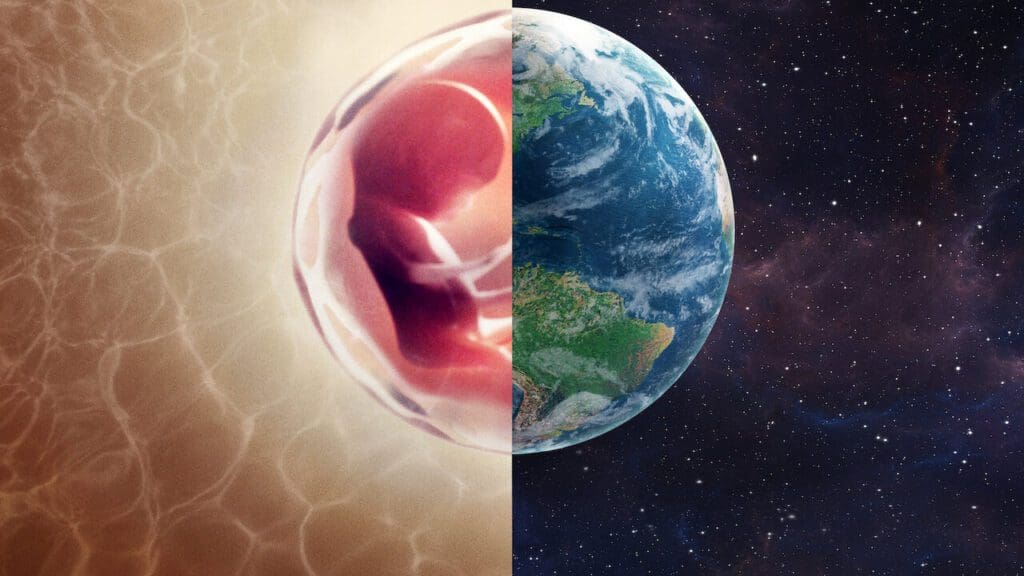Summary
Human: The World Within provides six interesting documentaries that have their feet solidly planted in the facts but never forget what viewers really want is human drama.
It’s a balancing act; producing a documentary that appeals to everyone is a skill. Human: The World Within manages to walk the line between educating and entertaining, borrowing from previous success stories and using their techniques to keep us engaged.
The first episode of the six episodes is entitled “React”, and explores the nervous system, its relationship with the brain, and tries to explain the complex nature of why we react in certain ways, how we can train ourselves to respond appropriately, and how our brain sends information, almost digitally, through our spines to every point in our bodies.
It’s fascinating, but the danger is that the complexities of the neural system that controls our every move may not be of great interest to your average Netflix viewer. The solution: Use real people in real situations to show and illustrate the science they are trying to explain.
We learn from a female boxer about training and muscle memory, and how fight or flight responses help keep us safe; we learn from Andy the engineer about back pain and sciatica. Interspersed between the science, there are tales of normal people, often in extraordinary situations. We see physiotherapists at work, helping people with common problems such as back pain, and who can’t relate to that?
Towards the end of the first episode of Human: The World Within, we meet Jason Little, who has lost his arm, but not his sense of humor, and we follow his daily inner struggles, along with the struggles of his loved ones, as he comes to terms with the terrible loss of a limb. Phantom pain is explained, but the real story here is Jason and his journey.
Technology, though, has come a long way. We see the research being done on a new prosthetic arm, and this cutting-edge work is pioneered on Jason. Neuron stimulators are implanted into his arm, threaded into his nervous system, and a new line of communication is opened between his prosthetic and his brain. It is fascinating and almost unbelievable, but watching Jason going through the tests that will test the new tech creates human drama that engages the audience. We want the tech to work, we want Jason to succeed, and we are rooting for him all the way.
The second episode, “Pulse”, focuses on our heart, and its workings. Both are examined, giving the producers plenty of opportunities for B roll of wonderful people doing amazing things. The need for oxygen is explored, and the reasons behind it explained — it’s all about your cells, don’t ya know, and once again this high school science has to be presented in a way an audience will absorb it. So it’s off to Colorado, where we are introduced to Kitty, a Southern Belle that enjoys extreme climbing experiences. We see her climbing in ice and snow in perilous conditions, and through Kitty, we learn about the depletion of oxygen in humans, as they climb in an atmosphere where we are simply not meant to go. Once again, the human aspect of Human: The World Within kicks in, we see normal people, taking part in somewhat extraordinary activities, then explaining how they can do it. Training is the key — the advice, keep moving. Steve Dean, a bus driver, explains the dangers of stationary jobs, and how he drove himself to hospital after a heart attack. His realization of his situation leads him to change his ways, and again the filmmakers focus on the real-life story to get the science across. Stakes are ramped up as we see the dangers of losing blood, how neurons react when blood leaves the body, and how a pregnancy emergency requires blood for a patient in a remote location. Once again, the human drama is where the audience becomes engaged, and by the end of the episode, we learn that a broken heart after trauma is not romantic fantasy, but a real scientific phenomenon that still has mysteries of its own.
By the third episode, you can see the premise of this series very clearly. “Fuel” examines food, and eating, the culture and ceremony of eating, but ultimately decides that food is only fuel. In Cortez, we meet a Navajo distance runner and follow his preparation for a run. Extreme forms of running are looked at, and the science of glucose in sport is explained. If you have ever thought about taking part in a half marathon, or even a 5k, it might be worthwhile checking this episode out. Fasting is later explored, and certain religious ceremonies that embrace the process are investigated. Anyone that has tried the 5-2 diet might find the science here interesting. The end of the episode has a look at allergies; all you lot with these issues should definitely tune in for this one.
“Defend” is our title for the fourth episode of Human: The World Within, and adapting to survive as a race is the theme here. Our immune system and its mysterious ways is incredibly topical just now as we struggle against a new attack. In Utah, we meet Cat Bigney who spends long periods of time in the harsh environment of the desert. How can she defend herself against the weather and the dangers present in the landscape? Well, your skin and its immune system are the key. However, microscopic bugs and germs are always ready to go on the offensive. White blood cells are deployed to defend against such attacks, and Cat knows that her immune system can repair and heal those minor breaches. Cue plenty of CGI showing you how your body repairs and heals. On top of that, your body learns how to deal with danger, so Cat’s immune system responds to the attacks, as they know what is happening and how to deal with it. She sounds like a superhero, but it’s just her body doing what it needs to do. Passive immunity is investigated, that’s antibodies passed from mother to child in the womb that helps children survive the difficult first few months of life. Later in the episode, we get an insight into Ebola and the horror of infectious diseases. There are prophetic warnings of viruses against mankind, and epidemics that can spread worldwide in very little time. However, it seems that the threat from within our own bodies is still even more dangerous, and we see the case study Milton Wright, who was diagnosed with cancer at 8 years old. Milton is a 3-time cancer survivor, and we learn of his struggle with leukemia. Damaged DNA and cells that don’t know when to die are a problem. The immune system has to kick in, but it’s this very system that can turn against us. We learn of chemotherapy, that targets cells, but the unspecific nature of the treatment can have devastating effects on the patient too. Milton’s story is heartbreaking, but there is light at the end of this particular tunnel.
Episode 5 of Human: The World Within centres on our senses, and all that that encompasses. It seems we are pretty much like a sponge, soaking everything up and immersing ourselves in a reality that we have created from our experience. Two ice skaters, Tarah Kayne and Danny O’Shea, are our initial case studies, that are at the top of their game and Olympic contenders. They work like clockwork, and they rely on their senses, and more, to compete at such a level. We watch the performers at work, and the science behind our senses tries to explain how they are able to do this with such precision. The five senses we are all familiar with may be fine for us, but the strange sixth sense is explored, and no, it’s not like that film at all. This is perhaps the weakest of the episodes if such a thing is pertinent here, and the show goes where you probably think it will go on this topic, however, the stakes get raised as we take a scary look at caving and a dangerous expedition that becomes a death trap for a group of enthusiasts that become embroiled in a life and death struggle in a water-filled cavern. Real-life footage provides some truly terrifying drama, as the group’s senses are overwhelmed in a fight to survive. The end of the episode explains that our senses define our reality, and help us to create new worlds all the time.
“Birth” is the final entry here. We all start as one cell, and we all have that in common. 250 humans are born every minute, and this episode tries to supply us insights into the secrets of the womb, and the nature of attraction. Sexy dancers Alla and Alex, pro dancers, are the gateway to understanding the nature of why we are attracted to certain people. However, it’s pretty much all reduced to lust and hormones by the scientists involved. Apparently, love makes us dumb. Who knew? All that chemical release in our bodies causes our heart to race, and flush our cheeks, and serotonin affects our brains, we can’t sleep, we often lose taste — I’m sure you’ve all been there. Pheromones are explained via the animal kingdom, but humans don’t work that way, despite what you may have read. It’s actually more of a symmetrical thing that’s going on. Good luck with that, y’all. Touch is also explored in the process, and interspersed with the science we get clips of Alla and Alex and their beautiful family, dancing, kissing, and eating birthday cake — you can fast forward through that bit. The birds and the bees are then given center stage, as all the questions you were afraid to ask are explained. We then meet pregnant dancer Jacqueline and through her, we follow the process of birth and development. The actual miracle of childbirth, and the scary initial moments of natural birth, complete with brain squeezing, educates the viewer with some info that I know I never really understood. In fact, there’s a lot in this final section that I never understood, so the job is done there.
Human: The World Within is an attempt at giving us an all-encompassing look at the human condition, without coming across as a public service announcement. The human drama and case studies are there to keep us invested in the information it wants to divulge, and to a certain extent, it succeeds. The intent here is to uplift and remind us that the human race is a fascinating intricate mechanism that should be celebrated, despite social media, and to that end, it succeeds, but it falls a little short in certain aspects, by covering topics that have been well documented before. However, if you enjoy these types of shows, I am sure you will find something of interest somewhere in the six episodes, and it will pass a quiet Sunday afternoon if it’s raining outside.
More Stories
- Inside Bill’s Brain: Decoding Bill Gates season 1 review



